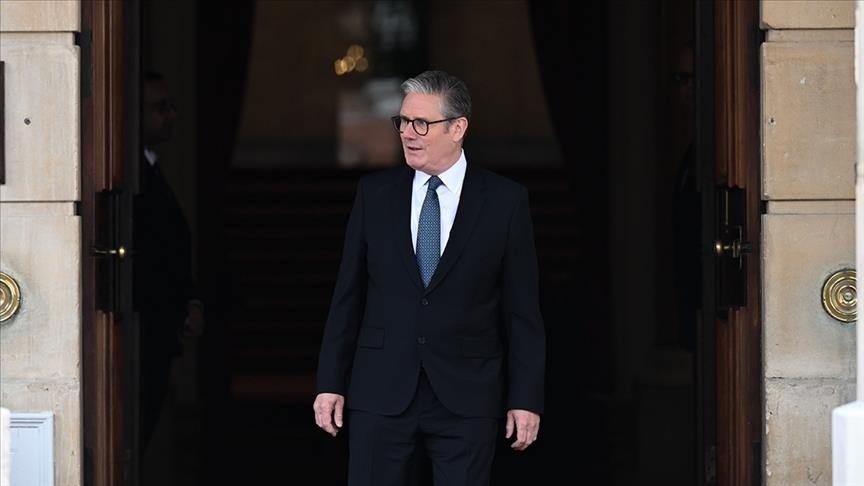The UK government on Tuesday, June 24, 2025, issued a stark warning in its new national security strategy: Britain must prepare for the possibility of direct attacks on its own territory as geopolitical tensions escalate, particularly with Russia and Iran.
The assessment, published Tuesday, lays bare a shifting global landscape.
Ministers caution that Russia’s military expansion and increasing Iranian aggression, in particular, the targeting of dissidents abroad, could soon drag Britain into a domestic conflict zone.
“For the first time in many years, we have to actively prepare for the possibility of the UK homeland coming under direct threat, potentially in a wartime scenario,” the strategy states
Nato Secretary-General Mark Rutte gave a blunt warning that Britons “better learn to speak Russian” without significant defense investment.
Echoing this comment, Prime Minister Keir Starmer has pledged to meet Nato’s informal 5 percent of GDP defense target by 2035
At the upcoming summit in The Hague, Starmer will expectedly reinforce the commitment to raise defense expenditure to 5 percent.
This will supposedly surpass the current 2.3 percent level.
It will also boost core military spending to 3.5 percent, with the remaining 1.5 percent going to border security, cyber and infrastructure resilience
A New Era of Domestic Risk
In his foreword to the review, Starmer remarked that “the world has changed,” citing intensifying Russian aggression, rising extremism, and revolutionary shifts in technology and warfare.
He emphasized that “hostile state activity takes place on British soil”
This edition of the security review pivots sharply from its 2021 predecessor, drafted during the pandemic, which prioritized resilience and vaccine infrastructure.
Now, global power rivalries take centre stage.
Russia: The Principal Threat
Russia is spotlighted as Britain’s primary security concern, due to a “campaign of indirect and sub-threshold activity.”
These include cyber-attacks, sabotage, and nuclear intimidation, that seeks to constrain Western decision-making and erode critical infrastructure
One specific vulnerability is highlighted: the network of undersea fibre‑optic cables responsible for 99 percent of UK data. Russian submarines have reportedly targeted them “persistently,” risking disruption to banking, communications, and national infrastructure
Iran: A Rising Menace on UK Soil
The review warns of “increasing” Iranian hostile activity in the UK, linked to Tehran’s efforts to silence dissidents abroad, and underlines Iran’s strategic coordination with Russia
While Iran’s capabilities don’t match Moscow’s, its growing willingness to deploy them on foreign soil is undeniable.
China: A ‘Challenge’, Not Yet a Threat
Interestingly, Beijing is termed a “challenge” rather than a direct threat, a shift from prior analysis.
Officials cite espionage and democratic interference but stop short of escalating China to the status of Russia or Iran.
This cautious framing reflects a balancing act: securing economic ties while managing security concerns
However, this stance has already drawn criticism.
Foreign Secretary David Lammy warned China is a “sophisticated and persistent threat”, language that Downing Street distanced itself from, preferring the review’s milder terminology {cite}.
Defence Overhaul: Drones, Subs and AI
Concurrently, a separate Strategic Defence Review urges a sweeping modernisation of the UK military-industrial complex:
Expand nuclear-powered attack submarine fleet to 12 under AUKUS
Construct at least six munitions factories and stockpile long-range weapons
Invest in drones, artificial intelligence and cyber capabilities
Build a “CyberEM” command focused on electromagnetic and cyber warfare
Enhance homeland air-defense and missile systems
These proposals form part of a broader vision to increase defense spending to 2.5 percent by 2027 and a hopeful 3 percent by 2034, depending on fiscal conditions
Political Strain and Financing Questions
Starmer’s commitment, billed as the “biggest sustained increase in defense spending since the Cold War”, promises an additional £13.4 billion annually.
This will largely be funded by redirecting foreign aid from 0.5 percent to 0.3 percent of GDP
Critics argue the strategy lacks a detailed funding pathway. While the 2.5 percent milestone is assured, targets for 3 percent and beyond remain undefined, with core capability outlays postponed to post-2029 assessments.
Strategic Implications: NATO First
This policy marks a marked pivot in UK security thinking: moving from pandemic-endurance to preparing for potential homeland conflict.
It underscores NATO solidarity and emphasizes national sovereignty, resilience and deterrence in the face of evolving threats
Conclusion
Britain’s new security strategy starkly reminds citizens and allies alike: in an era of hybrid warfare, drones and cyber sabotage, the threat is no longer distant.
From undersea cables to air defense radars, national infrastructure is vulnerable.
As the UK realigns from pandemic caution to wartime readiness, taxpayers face tough choices, balancing defence, diplomacy and domestic well-being.
But with growing instability on Russia’s western frontier and Iran’s reach extending onto UK soil, the country’s leaders say there’s no room for hesitation.
In today’s world, experts say, strategic under preparedness is no longer an option.



